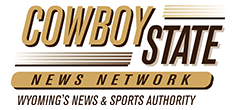You don’t have to put up with nasty recoil when you’re hunting. Even if you’re hunting our state’s bigger animals, like elk, moose, or even bison, today’s technology can take a lot of the sting out of your hunting rifle.
A friend told me he developed a bad flinch while sighting in his .300 Win Mag this year, and he fought with it during the season. He had three chances at nice bull elk, but he jerked as he pulled the trigger each time, and he ended up missing.
But it doesn’t have to be that way. There are a bunch of options out there to cut down on recoil. You can get recoil pads you can mount on your rifle, or you can get separate ones that go on your shoulder. You need to be careful with recoil pads, though, because they increase your length of pull, and that can change how you shoot. The best option is to have a gunsmith install a good recoil pad on your rifle after putting you and your gun through a fitting. That way, you can make sure your rifle is exactly the length it should be for you.
You can also put a muzzle brake on your rifle. A brake is a steel tube that screws onto the end of the barrel, and usually, it’s a bit bigger bore than your barrel. That allows the gasses that propel the bullet to escape sideways, rather than forward, and it cuts down on recoil. If you go with a muzzle brake, you’ll definitely have to have a gunsmith install it.
And then there’s ammo. Remington’s Managed Recoil ammo uses a special, lighter bullet, while Federal’s reduced recoil loads use the same bullet, but less pressure. If you go the reduced recoil ammo route, you’ll want to practice with it to make sure it doesn’t affect where you’re hitting.
One way or another, tame that recoil. There’s no sense in getting beat up by your gun.

